Contents


Planting a melon, it would seem, is not such a difficult task – you stick the seeds into the ground, fertilize, water and sit, wait for the crop to ripen. True, with such a careless approach to growing, the harvest will be small, and it will hardly please you with a sweet taste. So in this article we will look at how to properly plant and grow this crop at home, what are the requirements for planting in open ground, how you can help the plant in the growth process, and what is the scheme for caring for ripening melons.
Variety choice
When choosing a variety for planting, it is important to take into account the climatic features of the area, what kind of soil is on the site, what will grow nearby. If you do not live in the southern regions, where there is a real expanse for melons, then carefully read the description of the variety. Most heat-loving varieties are quite difficult to grow even in a greenhouse, to say nothing of planting in open ground. Therefore, you should choose zoned hybrids that are resistant to low temperatures, if late frosts occur in your area, with high immunity to diseases caused by the fungus. Basically, these are early and medium-early species, with a short growing season.
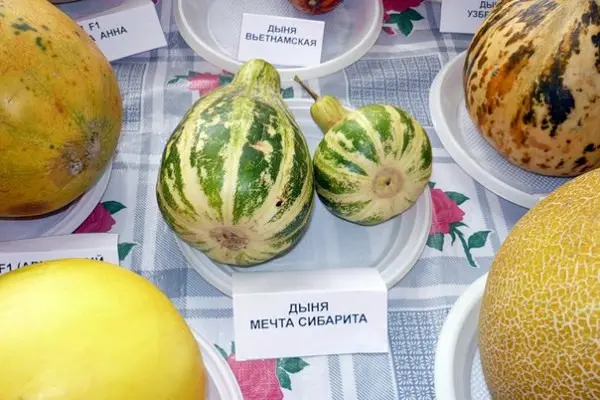
In the middle lane, you can plant early ripe and mid-early varieties that are grown through seedlings:
- Don’s novelty is a high-yielding variety with medium-sized fruits. The color of the peel is yellow-green, with a protruding mesh of fibers. The pulp is sweet and juicy.
- Early 133 – matures in 65 days, oval fruits weighing up to 2 kg, yellow peel, white flesh and very sweet.
- Bykovskaya 735 – an early ripe variety, oval fruits with a thick skin and sweet pulp. Pumpkins are large, weighing up to 2,5 kg.
- Assol F1 is a mid-season variety with small fruits, weighing up to 1 kg. The flesh of this melon is juicy, sweet with a strong aroma.
- Kolkhoznitsa is one of the most popular varieties in the middle lane. Despite the mid-ripening and low fruit weight (only 1 kg), this variety has very sweet pulp, which becomes sweeter with time.
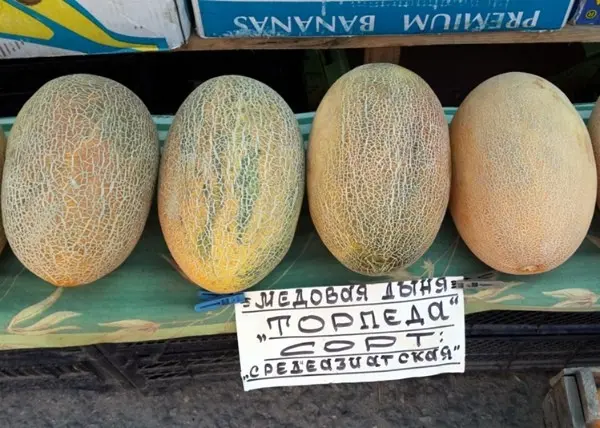
But for the northern regions, where the climate is harsh and merciless to heat-loving plants, you should choose the most resistant varieties that can be safely planted in open ground:
- Amber – a variety with oval fruits, the sweetness of which directly depends on the amount of solar heat that falls on them. The flesh is white and very juicy. However, this is a late-ripening variety – the harvest can only be harvested in mid-September.
- Dessert – a variety that should be grown under film cover in order to get a large number of small fruits, weighing up to 1 kg. When ripe, the peel acquires a rich green color, becomes thick, which allows pumpkins to be stored for a long time.
- Golden – another late-ripening variety, with medium-sized fruits weighing up to 2 kg. The pulp is juicy, dense.
- Siberian honey is a variety that is resistant to temperature extremes, as well as low air temperatures. Pumpkins are round, weighing up to 2 kg. The flesh is thick and juicy with a strong aromatic flavor.
But the list of varieties that are easy to grow and plant, of course, does not end there. You can also pay attention to the varieties “Alushta” and “Yuzhanka”, which are loved by many gardeners for the sweetness of the fruits and their large number.

It is often not recommended to plant different varieties of melons side by side, as this can adversely affect the quality and condition of the fruit. However, hybrids of the same line can be planted nearby.
Site selection and preparation
Soil for planting begins to prepare in the fall. During the digging of the site, the soil is abundantly fertilized with humus. In the spring, fertilizer will need to be applied again, but with the addition of minerals – calcium, phosphorus, potassium.
In the spring, shortly before planting seedlings or seeds, you can arrange a “steam” ridge: lay a thick layer of horse or sheep manure to a depth of 30-40 cm, and pour a layer of earth on top. First of all, such a system gives a constant flow of heat to the plant, which has a positive effect on the growing season, especially if it is rarely hot in your area. Secondly, this is a constant fertilizer and nourishment of the melon, which will help to grow more fruits.
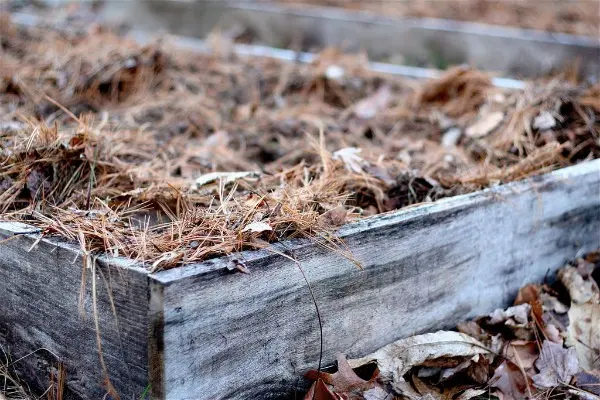
For cultivation, loamy or loamy soil is best suited, that is, with good aeration. Immediately before planting seedlings, the site must be dug up and loosened again. Among the predecessors for melon, it is better to choose cereals, herbs, cabbage, cucumbers, onions. Often it is planted next to the pumpkin, grafting.
Seed preparation
It is important to properly prepare the seeds in order to fully prepare them for planting in open ground or seedlings. The first step is to sort out the seed. To do this, the seeds are soaked for 20 minutes in a solution of table salt. Throw away those that float to the bottom, rinse under running water and dry a little. It is best to plant seeds 2 or 3 years old, since they give the most female flowers. But the seeds of the same age bring mainly male flowers.
After selecting the seeds, they must be disinfected in a solution of potassium permanganate. To do this, dissolve 1 g of potassium permanganate crystals in 10 liter of water and soak the seeds for 25 minutes. Once you’re done soaking, lay the seeds side by side on a damp cloth.
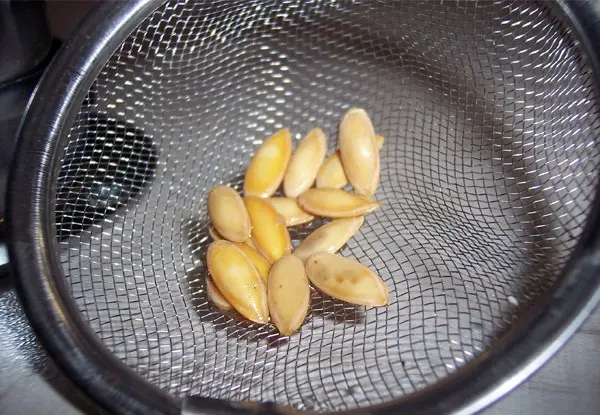
If you are planning to plant melons in colder regions, it is best to harden them off as well. To do this, take the ice from the freezer, put the seeds on it and leave it for 10 hours at a temperature of + 2-3 ° C.
Transplanting
It is most convenient to grow seedlings at home in peat pots or cardboard cups. So you can safely transplant them later into the soil in the garden without damaging the root system. As soil, use a mixture of peat, humus and sod. At the time of planting, the earth in the cups should be wet. Dip in each and place 2-3 seeds nearby, deepening by 3 cm. After the shoots appear, you can thin them out by removing weaker shoots.
Before the appearance of the first shoots, the temperature in the room where the melon seedlings grow should not fall below + 18-20 ° C. After the appearance of the third true leaf, the shoots are pinched to stimulate the development of lateral lashes.
Video “Sowing melon seeds for seedlings”
This video will show you how to sow seeds for seedlings correctly.
Planting seeds
On the dug up and fertilized bed, you need to outline the holes, so that between them there is at least 75 cm of free space. The beds should also not be crowded side by side – leave at least 80 cm of free space between them. Each hole must be filled with humus and watered before planting the seeds. The earth must warm up to at least +12 ° C in order to be able to plant. Otherwise, you simply will not have sprouts. You need to plant 3-4 seeds in each hole. Planted seeds are watered again, and mulched with dry earth on top.
If a cold snap is expected, and in most regions at the end of April this turn of affairs is not the most unexpected, cover the beds with foil. It can be removed during the day, but at night, before germination, it is better to cover the ground to keep warm.
Features of care
Melon requires careful care in the process of growth. As soon as sprouts appear, it is necessary to thin them out, leaving only one, the strongest. After the appearance of 4 true leaves, the plant is pinched, due to which the active growth of lateral shoots begins.
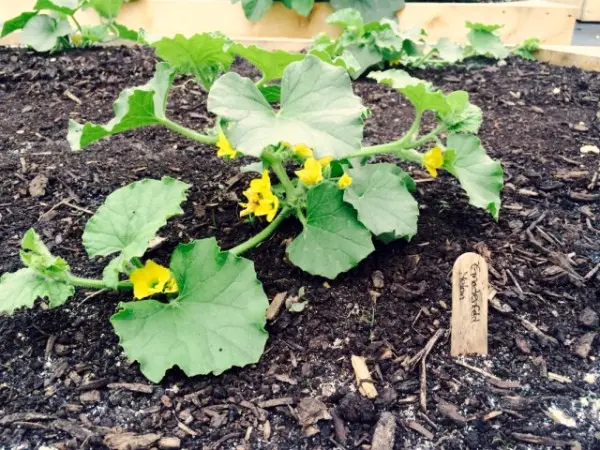
Be sure to loosen the soil between the rows. Next to the melon sprouts, the soil also needs to be loosened, but very carefully, as you risk touching the roots. You also need to water next to the plant, but not on him. Carefully remove weeds so that they do not deplete the soil and interfere with the development of the melon by growing nearby.
For fruitful growth and a good harvest, melon can be fed with saltpeter, infusion of chicken manure or mullein. The first top dressing, which must be carried out two weeks after planting, must contain potassium and nitrogen. Subsequent top dressing should be carried out every 2-3 weeks.
It will be useful to carry out preventive treatment against fungal diseases and insects. To do this, use the drugs “Ridomil Gold” and “Kvadris 250”.
If you are not tying the melon stalks, then make sure that the fruits are placed on stands, so you can protect them from rotting in the damp ground.
Video “Growing melon”
This video will introduce you to melon farming techniques from sowing and transplanting to harvest.
Author: Svetlana Galitsina
Loading…









